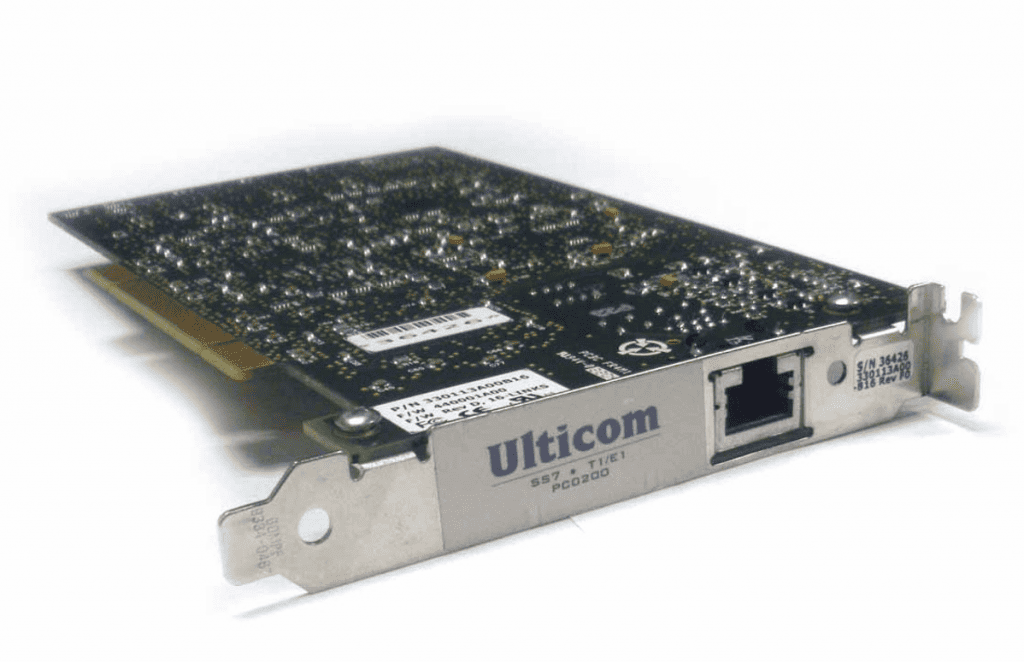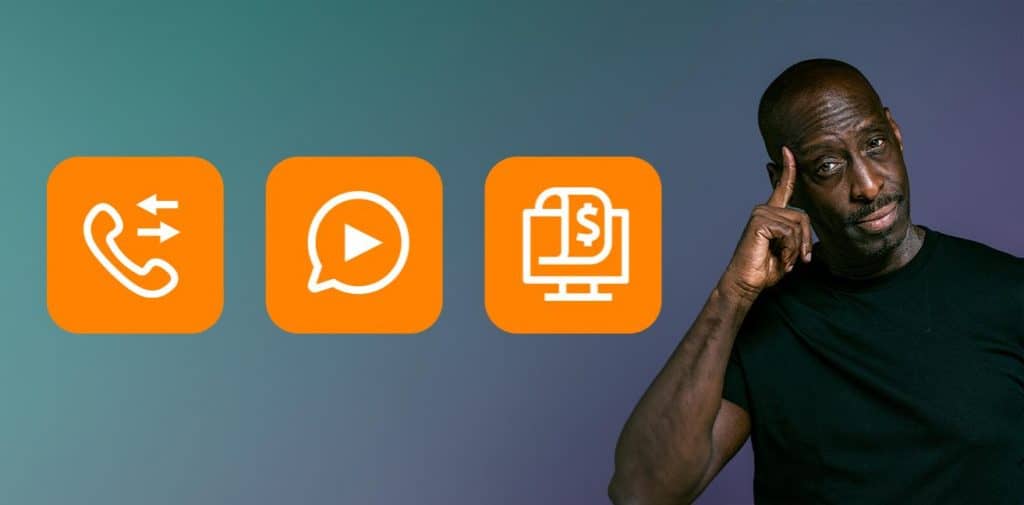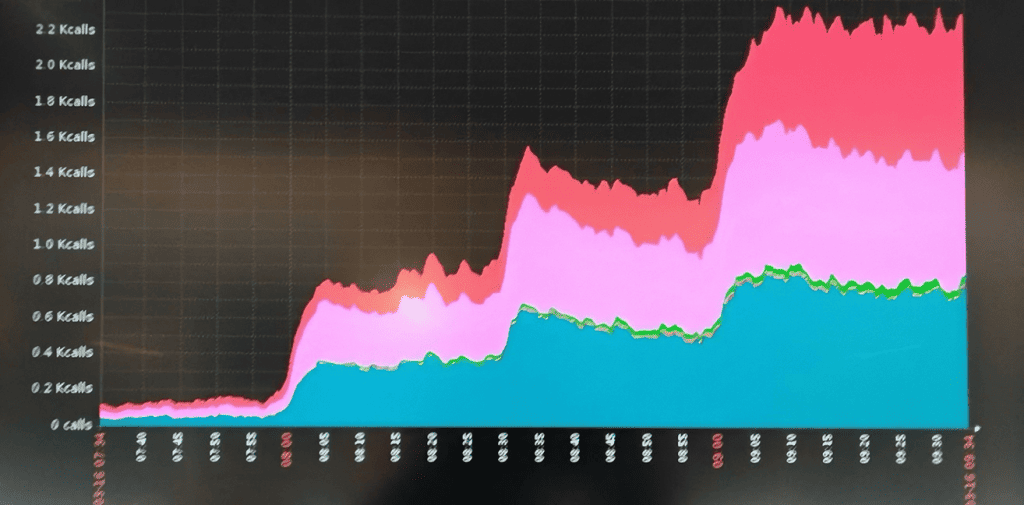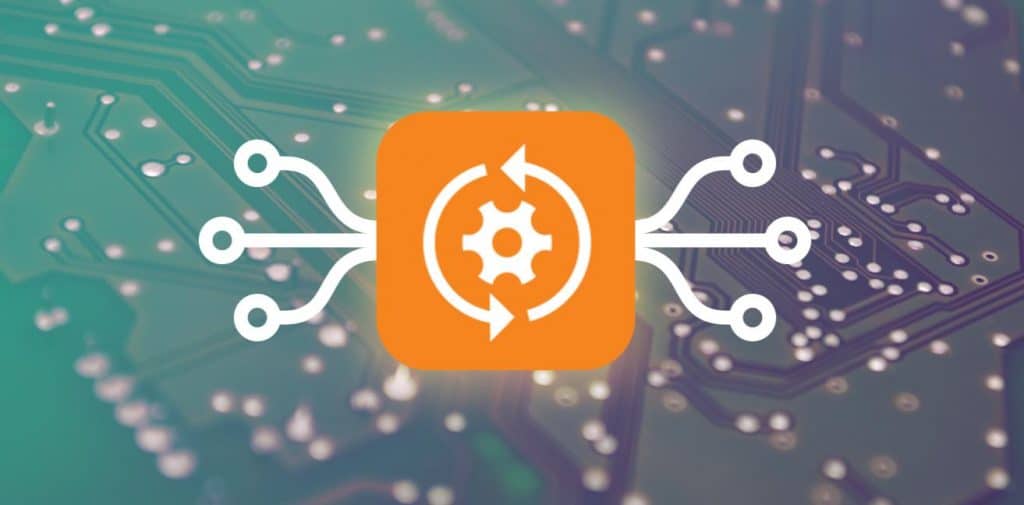Buzzwords come, buzzwords go. We’ve all “disrupted” and “dot-commed” and even “two-point-oh’d.” And when it comes to the fast-moving world of technology, more often than not, when the buzzword inevitably fades, the tech goes with it. Sometimes, however, a term will slide out of fashion but the tech behind it remains. It becomes the proverbial water we swim in – it’s all around us, but we don’t even see it anymore. That, as it happens, is a bit like the story of softswitch in telecom.
“Softswitch?!” you might say. “Didn’t that go out of fashion decades ago, like Windows 95 or Friendster?” Well, yes and no. The term may feel outdated, but the systems are still here. They actually underpin many of the ways we communicate with each other every day. In fact, the importance of softswitch to the telecom industry (and to end users everywhere) has grown exponentially as the business world adopted Voice over Internet Protocol (VoIP) communication and, in particular, Session Initiation Protocol (SIP). So let’s dive into this fundamental technology and resurface the role it plays in a CSP’s operations.
Grab your swim cap! Because the softswitch ocean is wide and deep.
So, What Is a Softswitch?
To say it in a few words: a softswitch system is responsible for routing (“switching”) calls, handling signaling protocols, and managing features such as call forwarding, voicemail, conference calling, and many other telephone processes that we all rely on. We call it “soft” because it’s software. (As opposed to the original switches, which were “hard.”)
Yes, you got that right. We call the original softswitches “hard switches” now, but back then, unless you could see the future, you just called them switches. In the old days, all telecommunications companies used nothing but these real-world switches to process and route phone calls – the Nortel DMS-100 hard switch is a good example.
Why Softer Can Be Better
“Back in the 2000s and early 2010s, softswitch was extremely pricy software from vendors like Alcatel or Cisco,” recalls Oleg Shevtsov, a senior project manager at PortaOne and a regular host of our Insider Tips video series. “It ran on ‘standard’ Intel-based hardware (although frequently the servers would come bundled in and overpriced) with specialized proprietary expansion cards where you would physically connect the phone cables. No, not the wire connecting your landline phone to the wall socket (if you are old enough to remember those). These were multi-wire cables, each carrying information about multiple phone circuits. Europe used 30 calls for E1, and in North America it was 24 calls for T1.”

As a result, the software could connect calls on the SS7 network (the main set of operating protocols for traditional phone networks). Also, the administrator could change the logic of call processing simply by editing a configuration file.
“This was a huge step forward compared to the hardware systems,” says Oleg. “Optionally, it could include media gateways operated via binary protocols like H.248. There was no strict definition of what softswitch was. So, many vendors did their best to advertise their solutions as softswitches. When VoIP softswitch came along, telcos saw it as something light, cheap, and sometimes open source, which helped wholesale operators achieve revenues on things like transit traffic and VoIP termination.”
A Quick Adoption
At that time, call volumes were not just increasing on-net (within the operators’ networks). They were also increasing off-net (between operators). “There were not enough physical lines for the circuit switching network, especially when operators in different countries or even regions wanted to connect directly,” explains Oleg. “So, operators started to embrace VoIP over dedicated physical links.”
The use of that VoIP along with codecs (algorithms used to convert an “analog” sound into a digitized form suitable for sending over the Internet) like G.729 and G.723 allowed telcos to stuff more calls into the same physical/optical data links. Then, operators realized they could sell their “leftover minutes” from their inter-operator commitments via the public Internet.
There were other clear benefits, too:
- Softswitches can be easily configured and modified through software updates. That allows for quick adaptation to changing network requirements and regulations.
- No hardware = lower costs. Plus, softswitches can run on commodity servers.
- They are highly scalable, allowing networks to expand without major overhauls.
Telecoms would still need to have and manage media gateways. (For example, converting voice calls between IP-based networks and traditional PSTN.) But the switching part had become much more simple and flexible.
When Is a Softswitch Not a Softswitch?
The short answer? When it’s actually SIP or VoIP. Technically speaking, only systems dealing with SS7 protocols (the still-alive dinosaur protocol powering the actual phone networks) can be 100% correctly called “softswitch.” (It’s kind of like how a winemaker can only call their sparkling product “champagne” if it was made in the Champagne province in France. But for those who worry about the taste and the value it delivers, Spanish cava is a perfectly good alternative.)
We hardly need to say that the advent of the ability to connect calls through the Internet was a bit of a game-changer for telecom. But VoIP was also a game-changer for softswitch. And a kind of a turning point, too. (At least within the universe of PortaOne.)
The VoIP “reverse takeover”
“We had VoIP systems such as PortaSIP being developed and enhanced, and they were being given more and more functionality. And one day we realized that these VoIP systems were becoming capable of functions such as call routing on top of functions like billing, data, video, and network management,” says Andriy Zhylenko, CEO of PortaOne. “So what happened with the advent of VoIP softswitch was not so much that softswitch expanded into the functionality of VoIP. It was more that VoIP systems were providing a comparable set of functionality for call management compared to ‘classic’ softswitch.”
In that way, softswitch became both everywhere and nowhere: united with VoIP to become a critical pillar of communications infrastructure, but more and more invisible as a concept. It was also becoming less and less cool as a buzzword – especially after mobile operators replaced NGN, or Next Generation Network, with IMS, or IP Multimedia Subsystem (this is an infrastructure for making calls in 4G mobile networks, which is basically SIP with a pre-defined blueprint of which servers should be on the network and what their roles are).
But let us assure you. Softswitch is still here, and it is still a quiet but essential telecom workhorse.
Hello, SIP

Which brings us to SIP. As the lines between VoIP and softswitch blurred, the same thing was happening with SIP and softswitch. What is SIP, exactly? SIP (remember, that’s Session Initiation Protocol) was invented in the late 1990s and has since become a foundation for VoIP, as well as for Unified Communications (UC). This signaling protocol is used for initiating, maintaining, modifying, and terminating real-time sessions involving video, voice, messaging, and other communications applications and services.
In short, it is an effective way to enable communication between different devices and networks. SIP operates through a series of requests and responses, similar to HTTP in web applications. Key SIP functions include call setup, call teardown, and call management, as well as handling media negotiation and device mobility. With SIP softswitch, you can efficiently route calls and control the various aspects of a communication session.
When Is SIP Like the Automobile to the Horse Industry?
As with most upstart technologies, not everyone saw the writing on the wall with SIP. “Some years ago, there was a company in eastern Europe that was producing popular VoIP systems [name redacted to preserve their egos],” says Andriy Zhylenko. “Our team met with them to talk about their projects, and after a few beers one of the senior execs banged his hand on the table and said, ‘SIP will never become a major protocol for VoIP! It’s not even a real protocol – it’s a toy to play with in the laboratory. Now, H.323 – that’s a real protocol! It was made by telecom people and so it will always be here forever.’”
As everyone in the telecom industry knows, SIP did in fact become the de facto standard. “It was designed not by the telecom people wearing suits and ties, but by the t-shirt wearing engineers. (The same ones who designed the rest of the Internet protocol.) They designed it because they wanted something simple,” Andriy adds. This might be unrelated, but that company went belly up about five years after that evening.
How Do Softswitches Work?

It’s nuts and bolts time. The reach of softswitch across communications processes makes it tough to sum up how this system works in just a few words. So to simplify the inner workings of softswitch, let’s break down its functions into three key categories.
Softswitch Function #1: Call Routing and Signaling
Beyond all the bells and whistles, call routing and signaling is the true core here. When a user makes a call, the SIP softswitch receives a signaling SIP message with an initiation request. (A type of message called INVITE.) These messages contain details such as caller and receiver info. (This is normally a phone number. But it could also be an email or any other unique ID.) It also includes supported media types (for instance, things like video streaming or the availability of an HD voice codec for audio).
The softswitch takes all of that information and uses it to route the call. This could be to another subscriber connected to the same softswitch (such as with an internal office phone system scenario – something that used to be called IP Centrex and that we now refer to as cloud PBX). Or, if the called party is on another operator’s network, the call will be routed between different telco operators. (Frequently this will involve intermediate carriers, who serve as traders of voice traffic between operators.)
That brings us to least-cost routing (LCR), which is perhaps one of the most important functions of softswitch in this area. When you dial up a friend in, say, India or the U.S., there are (usually) multiple providers who could support that call, and they’re all going to be offering different prices and different quality levels. Using LCR, softswitch will automatically do that bean-counting and route the call at the lowest available rate (that will provide decent quality).
Softswitch Function #2: Media Processing
These days, of course, communication is fairly likely to take the form of text or video or other forms of data rather than a simple voice call. SIP softswitch processes that media, and detects and address issues such as packet loss, jitter, and latency. (All of which can degrade the user experience.)
If necessary, it will also convert the media stream from one codec to another. When a caller initiates a call from a webRTC system using an application such as PortaPhone, the webRTC will by default use an opus codec. This is a modern and high-quality codec that uses very little bandwidth, making it the optimal choice when a caller is on a 4G network or is using an unreliable WiFi network in a coffee shop. But if a carrier for that call is using outdated telecom equipment that does not support modern codecs like opus (and instead uses something traditional, like G.729), the call cannot be directly established. This is where softswitch is the hero again. It works quietly in the background to seamlessly convert the media stream so that the carrier receives it in a format it understands.
Softswitch Function #3: Billing and Network Management
SIP and VoIP softswitch has also become integral to billing and network management in the telecommunications industry. These systems track call duration, destinations, and other metrics that are essential for service providers to bill their customers accurately. Softswitch even plays a role in maintaining security by implementing authentication and encryption protocols, often in the context of SIP and VoIP technologies.
And finally, softswitch will sometimes play the role of an SBC, or session border controller. This is a network component that acts like a guard or a gateway. It stands between the network and the outside world. The job? To make sure that no user (or evil hacker) can see or access the network itself. (And therefore cannot accidentally stumble across or actively exploit any vulnerabilities that might exist there.)
Are There Different Types of Softswitches?

Yes! Not all softswitches are the same. These systems come in a variety of types, each catering to different needs and functionalities. Let’s take a look at the three primary categories: Class 4 softswitch, Class 5 softswitch, and integrated softswitch.
Class 4 Softswitch
Class 4 softswitches are designed for basic voice calls. This type of softswitch excels in routing and managing a high volume of calls. It often includes features like call load balancing, least-cost routing, and media transcoding. Class 4 softswitches are essential for carriers who need to efficiently route international or national interconnect traffic.
Class 5 Softswitch
Which brings us to Class 5 softswitches. Also known as access softswitches, these are tailored for end users, businesses, and residential services, often using SIP and VoIP technology. This is the world of that cloud PBX we mentioned earlier: the Class 5 softswitch is facilitating business telephony features such as call hold and transfer, voicemail, call forwarding, interactive voice response (IVR) systems, call queues, and ring groups. For a pretty good example of Class 5 softswitch in action, read about our Tier 1 Malawian customer MTL.
Integrated Softswitch
Integrated softswitch combines the capabilities of both Class 4 and Class 5 softswitch, offering a broad range of features for VoIP services. These softswitches are versatile and adaptable, making them suitable for a wide array of applications, often leveraging SIP for various communication services. You will see integrated softswitch being used by large telecommunications operators and service providers to maximize the potential of telecom technologies for services like mobile cloud PBX.
What Are the Key Benefits of Softswitch?

So, we hope you now believe us that – even if it isn’t a hot new buzzword anymore – softswitch still plays a silent but essential role in a telecom’s operations. But if we haven’t fully sold you on the continuing importance of softswitch (yes, even today!), let’s take a closer look at some of its key benefits.
Advantage #1: Cost-Efficiency
The arrival of SIP softswitches significantly reduced the cost of operating a telecommunication network. Since they are software-based and run on commodity hardware, the initial investment was lower compared to traditional switches. Moreover, they required less physical space, consumed less power, and were easier to maintain. So you can see why it was “goodbye, traditional switches!” almost immediately.
Those cost savings also extend to international and long-distance calls. (Especially when routed using SIP softswitch.) Remember that least-cost routing you learned about in the video above? Softswitch can allow service providers to employ that telco magic trick, optimizing the path for calls and reducing expenses. This can benefit both providers and their customers.
Advantage #2: Scalability and Flexibility
Scalability is a defining feature of softswitch technology. Service providers can easily expand their networks by adding more servers or resources without the need for extensive hardware installations. SIP softswitch technology, in particular, allows providers to adapt to changing customer demands and to grow their networks seamlessly.
In the case of Class 5 softswitches, as the service is provided and managed in a centralized way – as compared to the traditional IP-PBXs that businesses own. It reduces the use of resources… and reduces e-waste, too.
Advantage #3: Enhanced Features and Functionality
In conjunction with SIP technology, softswitches provide a range of advanced features that include voicemail, call waiting, call forwarding, caller ID, conference calling, and mobile integration. When it comes to the PBX functionality we talked about in the Class 5 softswitch description, add to that call flow management, call queues, and interactive voice response (IVR) systems.
Advantage #4: Streamlined Network Management
Network management, call analytics, and insights are simplified with SIP softswitch. Specifically, it allows businesses to control and monitor all the network elements in a centralized way. Softswitches provide real-time data on call traffic, quality of service, and network performance. PortaOne customers often appreciate the ability to display call volumes, quality indicators, link statuses, and much more. (PortaOne customers appreciate a whole lot of our softswitch advantages, in fact.)

Oh yes, and security measures are integrated into softswitch as well. SIP softswitch uses encryption, authentication, and access control to protect data and maintain the integrity of the network.
Why Softswitch Technology Is Here to Stay

So it’s pretty clear that softswitch hasn’t gone anywhere. (Even if the word itself feels a bit retro.) But now that you have a good understanding of softswitch in the present day, what does the future of softswitch look like?
In short, it looks pretty good. The future of softswitch technology, including SIP softswitch, holds exciting prospects as communication networks continue to evolve. Several trends and innovations are poised to shape the development of softswitch technology. Let’s look at the three biggest ones.
Trend #1: Artificial Intelligence and Machine Learning Integration
These technologies can analyze call data, predict network issues, and automate troubleshooting. Any SIP softswitch can benefit from AI and ML capabilities, improving network management and ensuring a seamless communication experience for users.
Trend #2: 5G
Softswitch has long been integrated into 4G, and it is already a big part of 5G. The ultra-low latency and high bandwidth capabilities of 5G are requiring softswitches to adapt to new use cases, including IoT, augmented reality, and virtual reality applications.
Trend #3: The Internet of Things (IoT)
IoT is growing rapidly, and telecoms cannot ignore the massive market of IoT innovators. Softswitches – again, particularly SIP softswitch – will also play a critical role in managing the diverse communication needs of IoT devices.
What Could You Accomplish with Softswitch Technology?
If you want to tap into the flexibility, cost-efficiency, and feature-rich capabilities of softswitch – whether that’s traditional softswitch, SIP softswitch, or softswitch integrated with IoT, cloud PBX, AI, or whatever comes next – we have the experience and expertise to tailor a solution that is perfect for you. Our PortaSwitch and PortaSIP platforms are flexible, reliable, and scalable, and our 7-week update schedule means that the latest new features are always just around the corner.
Reach out to contact@portaone.com and let us know what you want to do. We’re always happy to collaborate, advise, and offer answers.
Softswitch FAQs
Softswitch is a software-based system that manages call routing and control in modern telecommunications. It is a crucial element of Voice over Internet Protocol (VoIP) technology.
In VoIP, softswitch is the core that directs VoIP calls, handling setup, routing, and termination to enable calls over the Internet.
PortaOne offers a versatile softswitch platform for telecom service providers, supporting VoIP and unified communications. Contact us to learn how we can tailor a solution for you.
Class 5 softswitch serves individual end users, offering services like residential phone lines and VoIP services with features like voicemail.
Softswitch in Class 4 manages high-volume, long-distance call routing between different VoIP networks or carriers.
Class 5 softswitch serves end users (and businesses), while Class 4 softswitch manages carrier-to-carrier traffic.
Well, this is the PortaOne blog, so you know who we think is best. (And we can make a pretty good case for it, too.) But in truth, the right provider for you will depend on your needs. So, how to choose the best softswitch provider? Consider factors like scalability, cost, features, and compatibility with your infrastructure. Other common providers (besides us) include Cisco, Asterisk, and FreeSWITCH.











